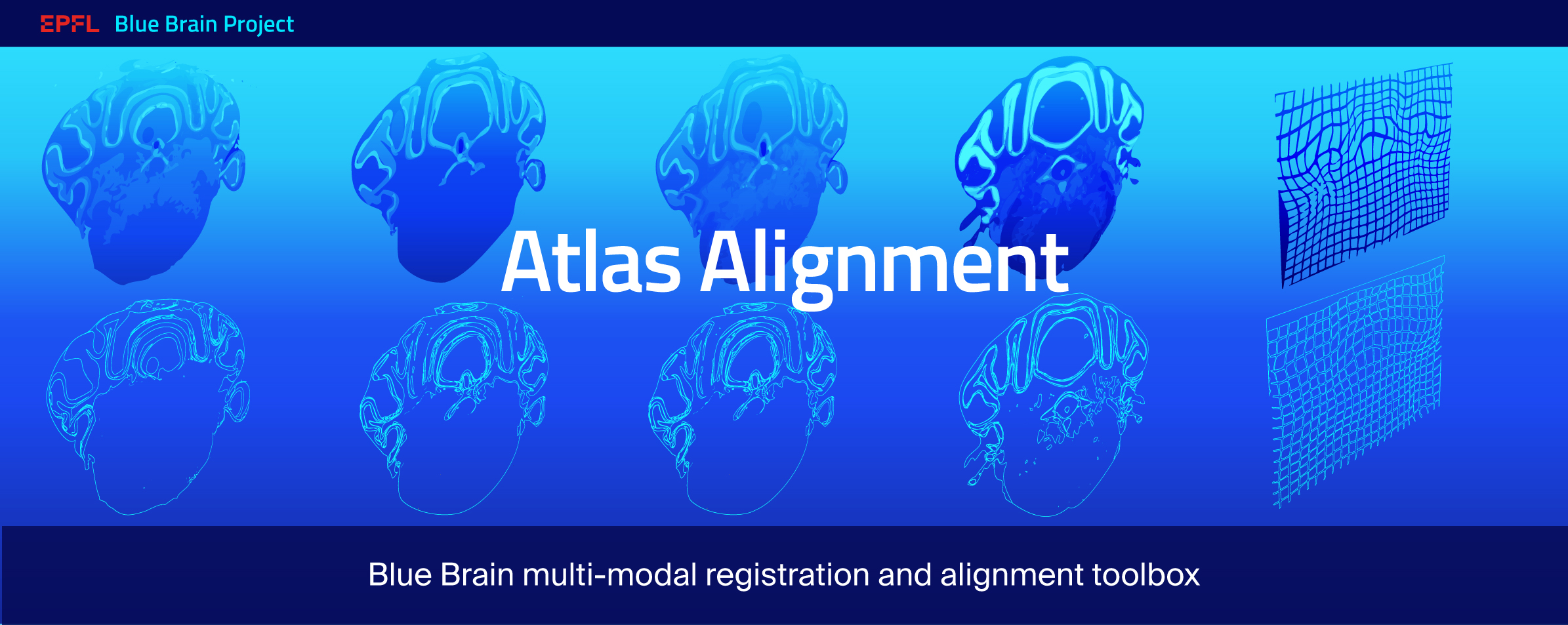| Latest Release |

|
| License |

|
| Data |
|
| Build Status |

|
| Code Style |




|
| Python Versions |

|
Atlas Alignment is a toolbox to perform multimodal image registration. It includes both traditional and supervised deep learning models.
This project originated from the Blue Brain Project efforts on aligning mouse brain atlases obtained with ISH gene expression and Nissl stains.
All details related to installation and logic are described in the official documentation.
Some of the functionalities of atlalign depend on the TensorFlow implementation
of the Learned Perceptual Image Patch Similarity (LPIPS). Unfortunately, the
package is not available on PyPI and must be installed manually as follows.
pip install git+http://github.com/alexlee-gk/lpips-tensorflow.git#egg=lpips_tfYou can now move on to installing the actual atlalign package!
The atlalign package can be easily installed from PyPI.
pip install atlalignAs an alternative to installing from PyPI, if you want to try the latest version you can also install from source.
pip install git+https://github.com/BlueBrain/atlas_alignment#egg=atlalignIf you want a dev install, you should install the latest version from source with all the extra requirements for running test and generating docs.
git clone https://github.com/BlueBrain/atlas_alignment
cd atlas_alignment
pip install -e .[dev,docs]You can find multiple examples in the documentation. Specifically, make sure to read the Building Blocks section of the docs to understand the basics.
You can find example data on Zenodo.
Unzip the files to ~/.atlalign/ folder so that you can use the data.py module
without manual specification of paths.
This project was supported by funding to the Blue Brain Project, a research center of the Ecole polytechnique fédérale de Lausanne, from the Swiss government's ETH Board of the Swiss Federal Institutes of Technology.
COPYRIGHT (c) 2021 Blue Brain Project/EPFL
